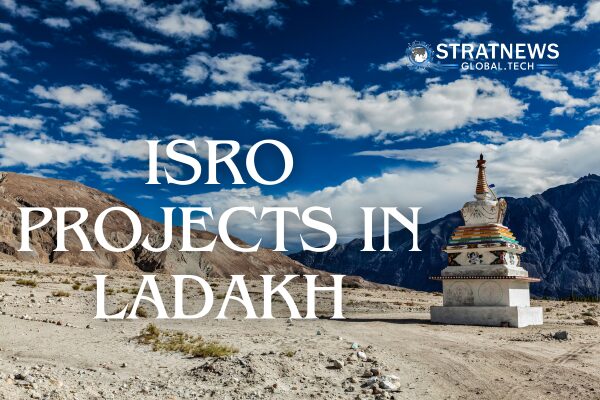ISRO Expands Space Projects in Ladakh for Remote Sensing and Connectivity
India’s space agency ISRO is ramping up efforts to strengthen satellite-based services and scientific studies in Ladakh, with a series of upcoming projects and ongoing initiatives aimed at improving remote sensing, communication, natural resource management, and disaster preparedness in the Union Territory.
Upcoming ISRO Satellites to Aid Ladakh
By 2027–2028, ISRO plans to launch several satellites, including Resourcesat-3 and 3A, Resourcesat-3S and 3SA, HRSAT, G20 Satellite, and TRISHNA. These satellites will enhance India’s remote sensing capabilities and provide critical data for Ladakh, supporting research on natural resources, land use, and environmental changes.
Currently, data from multiple in-orbit satellites—such as Cartosat-2 and Cartosat-3 series, Resourcesat-2 and 2A, RISAT-1A, INSAT-3DR and 3DS, Oceansat-3, SARAL, and NISAR—are already being utilised across India, including Ladakh.
Satellite Connectivity for Communication Services
Twelve operational Indian communication satellites already provide coverage over Ladakh, with capacity offered to service providers to improve telecommunication and broadband connectivity. Additionally, ten foreign satellites and three low-earth and medium-earth orbit constellations have been authorised to extend services across India, including Ladakh.
This expanded connectivity aims to reduce digital gaps in the region, bringing better access to information, services, and e-governance.
Space Applications for Ladakh’s Development
ISRO has launched several remote sensing projects tailored to Ladakh’s unique ecosystem and development needs:
LAMA (Ladakh Specific Modelling and Space Applications): Focused on studying natural resources, the environment, and climate change, along with creating a dynamic geoportal for resource management.
Geo-Ladakh Spatial Data Infrastructure: A comprehensive geoportal supporting agriculture, horticulture, renewable energy planning, water conservation, artificial glaciers, and flood hazard assessment.
AMRUT-1.0 and AMRUT-2.0: Development of GIS-based master plans and waterbody information systems for Leh and Kargil.
LULC Change Analysis: Ongoing monitoring of land use and land cover changes for Ladakh at a national scale.
Disaster Management and Space Object Tracking
Through its Disaster Management Support Programme, ISRO provides satellite-based inputs to national and regional agencies for effective disaster preparedness and response, including in the Himalayan region of Ladakh.
Under the NETRA (Network for Space Object Tracking and Analysis) project, ISRO is also establishing an optical telescope at Hanle, Ladakh. This facility will help track objects in geostationary orbit, strengthening India’s space situational awareness.
These projects underline Ladakh’s growing role in India’s space programme, both as a beneficiary of satellite-based applications and as a site for key space infrastructure.
With inputs from Reuters


